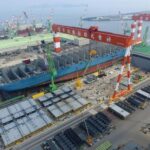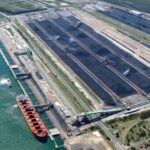Energy News Beat
Japan, once the undisputed titan of global shipbuilding, is embarking on an ambitious journey to rejuvenate its maritime manufacturing prowess, aiming to double its shipbuilding output by 2030. This bold strategy, spearheaded by the ruling Liberal Democratic Party (LDP) and the newly appointed leadership of the Japan Shipbuilding Industry Association (JSIA), is driven by a complex interplay of economic security, decarbonisation imperatives, and a desire to regain significant global market share in a rapidly evolving geopolitical landscape.
For decades, Japan commanded a dominant position in shipbuilding, accounting for nearly 50% of global output in the 1990s. However, intense price competition, coupled with substantial state subsidies and economies of scale enjoyed by Chinese and South Korean yards, led to a sharp decline. Today, Japan’s global market share has plummeted to roughly 10%, trailing far behind China (70% of newbuild capacity) and South Korea.
Yukito Higaki, president of Imabari Shipbuilding, Japan’s largest shipyard, and the recently appointed chairman of the JSIA, has set an audacious target: regaining at least 20% of the global shipbuilding market share by 2030. “To become a price leader who has the power to control pricing, we must at least achieve a 20% global market share by 2030,” Higaki stated earlier this month, signalling a clear intent to re-establish Japan as a formidable force.
The LDP’s proposal, submitted to prime minister Shigeru Ishiba, emphasises the critical role of maritime manufacturing capabilities in national security. The plan is underpinned by Japan’s 2022 Economic Security Promotion Act, allowing direct government support for industries deemed vital to national interest. This includes the rehabilitation of dormant shipbuilding and repair facilities and incentivising public and private investment in next-generation infrastructure.
Japan is actively seeking collaboration with the United States to counter China’s maritime dominance. Discussions are underway for a Japan-US Shipbuilding Revitalization Fund to channel investment into both domestic and US-based yards. Japanese firms are eyeing contracts for car carriers, LNG carriers, and ice-class naval vessels for the US market, positioning themselves as strategic alternatives to Chinese suppliers. This collaboration also extends to naval cooperation and the establishment of a bilateral maritime supply chain decoupled from China.
To achieve its ambitious goals, Japan’s plan includes a national shipyard model. The government proposes a “state-owned facility private operation” approach, where the government funds and builds shipyard infrastructure estimated at ¥50-80bn ($341m to $546m) for new docks and lifting equipment, which is then leased to private enterprises. Sources tell Splash Extra this new national shipyard will focus on LNG, all linked to energy security. Japan will have a major need to replace old steam turbine units and will need new ships for a US – Japan LNG trade deal that starts from 2030. JERA, Japan’s biggest power generator, has agreed this month to new supply deals for US LNG. JERA plans to buy up to 5.5m tons per annum of US LNG under 20-year contracts, with deliveries starting around 2030.
A government fund of approximately ¥1trn is planned for equipment investment, promoting the use of digital technology to enhance efficiency in ship development, design, and construction.
Addressing a severe labour shortage (the sector’s workforce declined by over 10,000 in the past five years to 71,000 as of 2024), Japan plans to establish training centres, expand foreign worker programs, and promote shipbuilding as a career to combat an ageing demographic and waning interest among younger generations. Approximately 40% of Japan’s shipbuilding labour force is over 55, risking a skills gap as experienced workers retire.
Despite the resolve, significant hurdles remain. Fierce price competition from heavily subsidised Chinese and South Korean yards continues to be a major challenge. Danish Ship Finance warns that unless Japanese shipyards secure a substantial wave of new orders, average capacity utilisation rates could plummet from 50% this year to a mere 20% by 2027, threatening both industrial output and the retention of skilled workers. Structural factors like an ageing workforce, limited coastal land for new facilities, and the slower pace of policy reform compared to rapid technological advancements also pose constraints.
The post Japan charts course to double shipbuilding capacity by 2030 appeared first on Energy News Beat.









